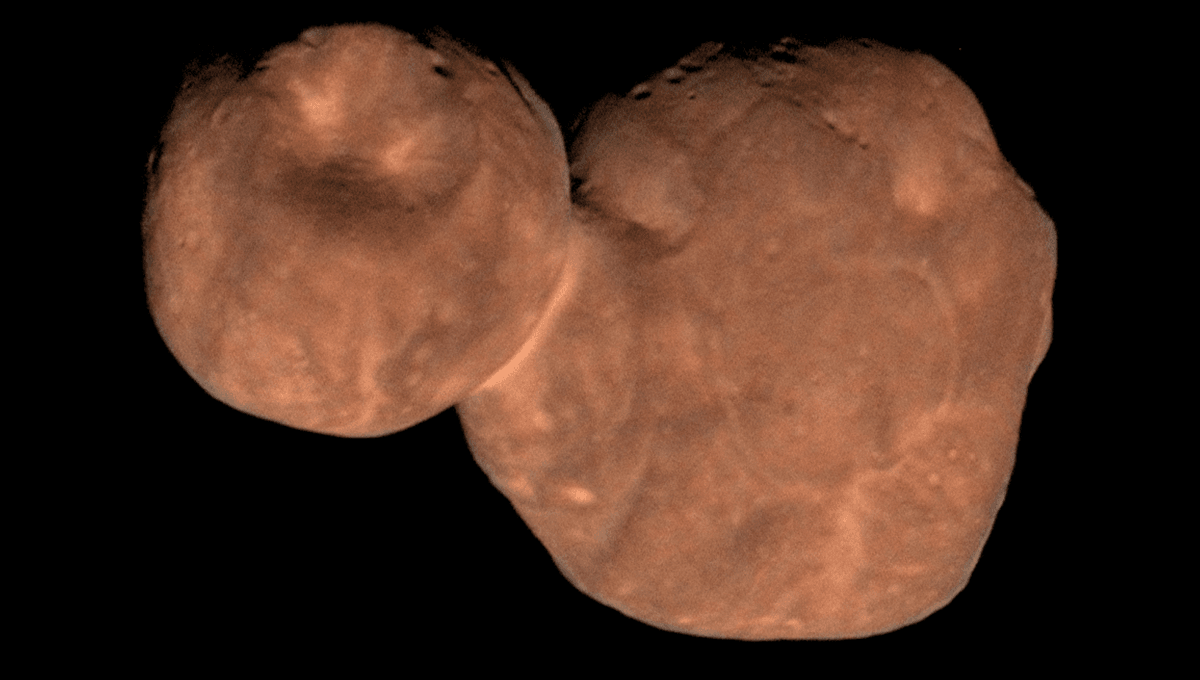
Back in 2019, NASA’s New Horizons probe flew by Arrokoth, a two-lobed small object in the Kuiper Belt far beyond Neptune. Observations of the object reveal mounds on the surface of the lobes and their size, shape, and composition. They are all remarkably similar, suggesting that these were the original building blocks for this far-away world.
The object is made of two different size lobes, called Wenu (the large) and Weeyo (the smaller) – it looks a bit like two hamburgers stuck together. On its longest axis, it is 36 kilometers (22 miles) across. The team identified 12 mounds of about 5 kilometers each in length that make up Wenu, and possibly three in Weeyo, though the latter could not be well-characterized in the study. The analysis, however, shows them to be extremely similar and the team doesn’t believe this is an accident.
“Similarities including in sizes and other properties of Arrokoth’s mound structures suggest new insights into its formation,” Dr Alan Stern, the principal investigator of the New Horizons mission, said in a statement. “If the mounds are indeed representative of the building blocks of ancient planetesimals like Arrokoth, then planetesimal formation models will need to explain the preferred size for these building blocks.”
The formation model sees these big chunks of space material having come together very slowly, not much faster than a person on a gentle jog. Once they collided, they gradually merged into what we now call Arrokoth, a small world 44.5 times further away from the Sun than the Earth. It has not changed much over billions of years.
“It’s amazing to see this object so well preserved that its shape directly reveals these details of its assembly from a set of building blocks all very similar to one another,” added Lowell Observatory’s Dr Will Grundy, co-investigator of the New Horizons mission. “Arrokoth almost looks like a raspberry, made of little sub-units.”
Upcoming missions, like NASA’s Lucy mission, launched two years ago and the European Space Agency’s Comet Interceptor, will have a chance to study pristine planetesimals that shouldn’t have changed much. This might provide more insight into how these worlds came to be.
“It will be important to search for mound-like structures on the planetesimals these missions observe to see how common this phenomenon is, as a further guide to planetesimal formation theories,” Stern concluded.
The study is published in The Planetary Science Journal.
Source Link: Mounds On Distant World Arrokoth Open A Window On How It Formed